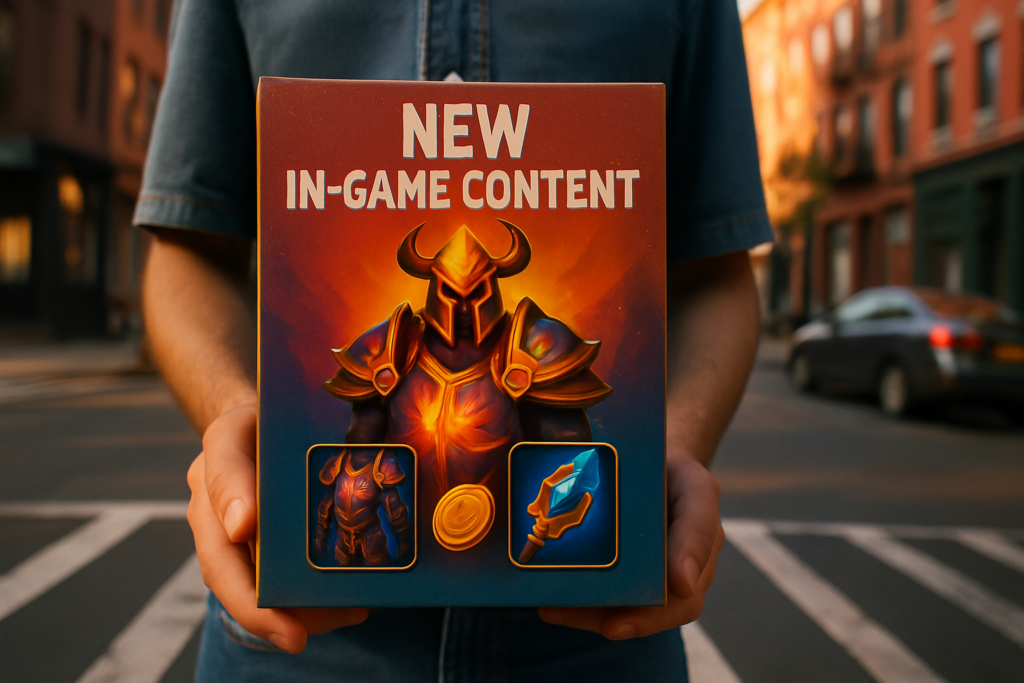The Psychology Behind the Spend
Game developers have gotten surgical with how they design spending moments. A $0.99 skin? Practically invisible to your wallet. It’s not accidental. These purchases are meant to feel like dust too small to worry about, too convenient to resist. Tiny prices lower your mental guard. Pull the trigger now, deal with the total later.
That’s the trick: engineers build in instant rewards that hit fast. You swipe, you get the upgrade, the animation flashes, the dopamine flows. Long term value doesn’t even need to enter the conversation because you’re not thinking five moves ahead; you’re thinking about the next minute.
Now stack that over time. Dozens of $0.99 hits start looking a lot like a $50 game. But here’s the catch: if that same upgrade was bundled in a $9.99 pack up front, you’d hesitate. You’d weigh the cost. You might walk away. Developers know that. That’s why they slice the price into bits. Make it feel casual. Harmless. Normal.
The result? Players spend more often, more easily and usually without realizing just how much has gone out the door.
Types of Microtransactions That Add Up Fast
Let’s start with the basics the stuff that looks harmless but stacks hard over time.
Cosmetic upgrades are the gateway. Skins, outfits, weapon wraps they don’t impact gameplay, but they tap into status and self expression. A new skin might cost $2. Not much until you’ve bought ten. Or twenty. These offers aren’t random either they’re timed for events, pushed with exclusivity, and often bundled just above impulse price points.
Then there’s the murkier side: pay to win mechanics. These are boosts or gear that give real gameplay advantages stronger weapons, more XP, better stats. Some games dress it up as “progress acceleration,” but the effect is the same: you pay to stay competitive. In PvP environments, that’s not just annoying it’s a straight up arms race.
Season passes, loot boxes, and limited time offers bring the FOMO. Passes promise premium content over time more skins, boosts, maybe side quests all locked behind a paywall that refreshes every few months. Loot boxes add chance to the mix. You pay for a shot at something rare, and that gamble is addicting. LTOs crank up the urgency, forcing you to spend now or miss out.
Lastly, subscriptions. These often show up disguised as “convenience.” Daily rewards, VIP queues, auto collect features. Small monthly fees that seem worth it until you forget you’re still paying them three games later.
Individually, it’s all minor. Together, it’s death by a thousand cuts. And that’s exactly how it’s built.
The Subtle Cost of “Free to Play”

The label “free to play” gives off a comforting illusion no upfront cost, no commitment. But in practice, it’s often the most expensive lane you can take. Games hook players with easy access, then slowly introduce friction: wait timers, limited energy, subtle roadblocks. The fix? A small spend. A dollar here for some gems, five bucks there for a faster upgrade. Each purchase feels minor, but they add up fast.
Casual gamers might drop money on cosmetics and instant gratifications purely for fun or visual flexing. Competitive players tend to spend on advantages: better stats, faster leveling, exclusive gear. Both groups fall into the same loop momentary satisfaction followed by the next purchase opportunity.
Developers use behavioral models pulled straight from psychology textbooks: variable rewards, artificial scarcity, and daily tasks engineered to build habits. These systems guide behavior without users always realizing it. Keep the dopamine flowing, and the wallet stays open.
Want to understand just how calculated this all is? Check out our related deep dive into mobile game monetization.
How Developers Maximize Revenue
Behind every successful in game shop is a mountain of data. Game studios aren’t just guessing anymore they’re watching how players interact down to the microsecond. This means pricing strategies are no longer one size fits all. If you’re in a high income region, don’t be surprised if your in game skins quietly cost more than someone playing halfway across the globe. That’s geo targeting at work.
Spending habits vary by location, age group, even time of day. Devs use that intel to set up subtle nudges: a pop up offer when your energy runs low, a limited time item that appears right when you hit a skill plateau. Every moment is a chance to spend, and the most profitable games are designed around those friction points.
Smart design doesn’t just offer products it creates urgency. Timers, daily bundles, and inventory limits all push players to act now, while they’re emotionally invested. It’s strategy backed by psychology, scaled by machine learning.
Want to dig deeper into the techniques behind the curtain? Check out this expert deep dive on mobile game monetization.
What Gamers Can Do to Stay in Control
The good news? You’re not powerless. Microtransactions are built to be sneaky, but you can still outsmart them. Start by setting a hard monthly spending cap something that fits your budget and doesn’t drift. Stick to it. Treat it like rent: non negotiable.
Second, use spending trackers or, better yet, turn off in app purchases entirely on your device. Most systems let you lock that function behind a password or screen time limit. It’s like putting a padlock on your wallet before walking into a casino.
Most important know when a game stops respecting your time and starts preying on your behavior. If fun starts to feel like obligation, or if you find yourself paying just to keep up, it’s time to hit pause or bail entirely. Manipulative design shouldn’t be rewarded with your money or attention. You get to choose where and how you play.
Final Thought: It’s Not Just About Money
When Microtransactions Change the Game
While microtransactions are often framed as optional or cosmetic, they can fundamentally reshape how games are experienced.
Enjoyment declines when meaningful progress is locked behind a paywall or when constant purchase prompts disrupt immersion.
Fairness takes a hit in competitive games where pay to win mechanics give spending players an advantage.
Community dynamics shift as divisions emerge between players who spend and those who don’t.
Awareness Is the First Line of Defense
As the gaming landscape continues to evolve, understanding how in game monetization works is more important than ever. Gamers armed with knowledge can make more conscious choices about how, why, and when they spend.
Learn to spot manipulative design patterns
Question whether a purchase adds genuine value or short term gratification
Advocate for balanced monetization models in game communities and reviews
Microtransactions aren’t going away but how we engage with them can change for the better.


 is a key contributor to Luck Lounge Land, bringing her expertise in psychology and behavioral analysis to the platform. Her work focuses on the psychological aspects of gambling, helping users understand player motivations and decision-making processes. Morgana’s well-researched articles make her a respected voice in the community.
She also contributes to the site's 'Game Theory Academy,' developing modules on strategic thinking. Outside of her professional work, Morgana enjoys studying the latest trends in casino games and behavioral research. Her passion for the field and engaging writing make her a valuable asset to the Luck Lounge Land team.
is a key contributor to Luck Lounge Land, bringing her expertise in psychology and behavioral analysis to the platform. Her work focuses on the psychological aspects of gambling, helping users understand player motivations and decision-making processes. Morgana’s well-researched articles make her a respected voice in the community.
She also contributes to the site's 'Game Theory Academy,' developing modules on strategic thinking. Outside of her professional work, Morgana enjoys studying the latest trends in casino games and behavioral research. Her passion for the field and engaging writing make her a valuable asset to the Luck Lounge Land team.
